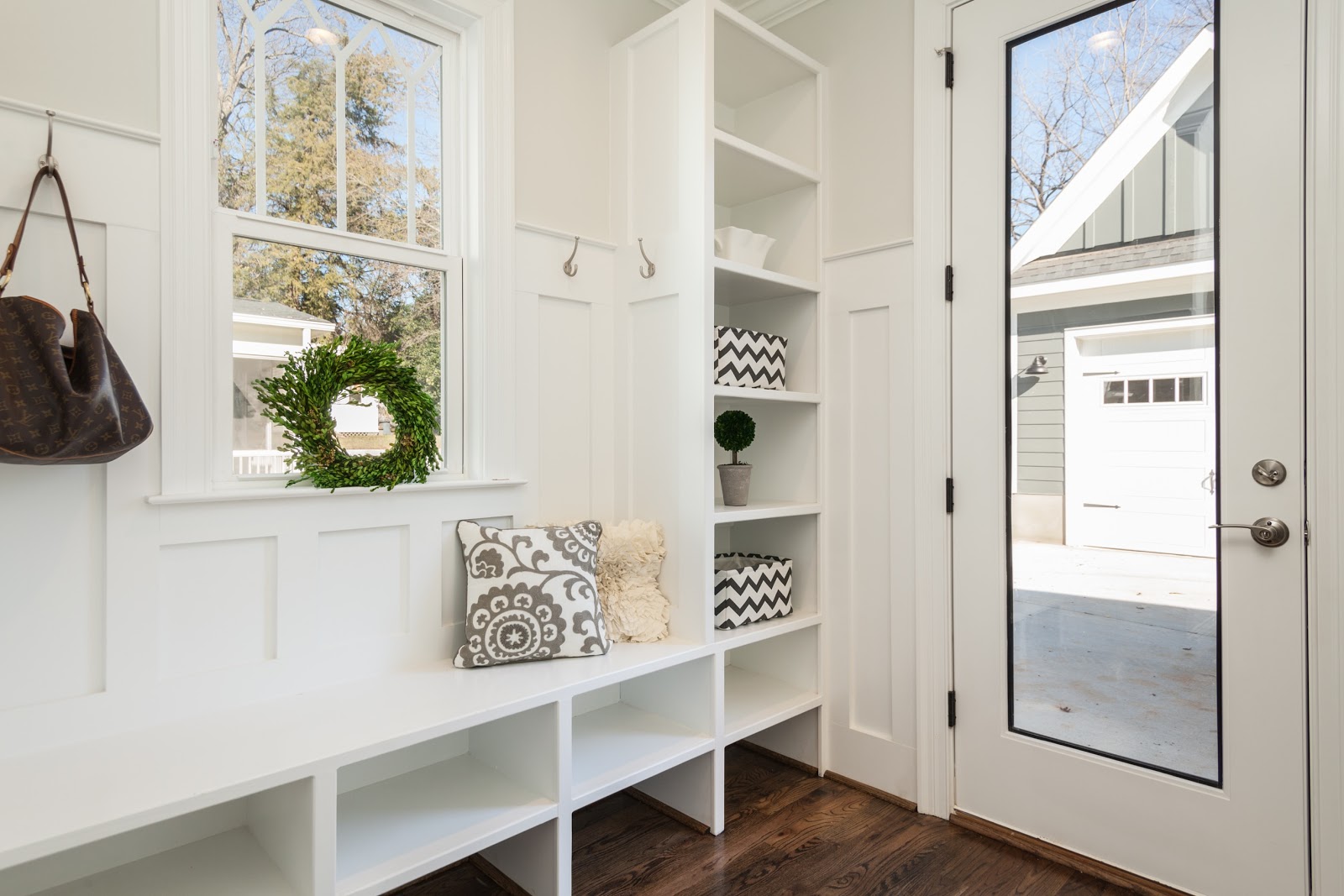A mudroom is a wonderful feature to have in a house: a space to transition from outside to inside, so that you can avoid bringing too much of the outside in. But let’s face it, a mudroom that is not fully thought-out can quickly become a disaster area. Here are some ideas for enjoying the benefits without getting bogged down in the mess.
First, think about the two main functions of this highly functional space:
- It’s an indoor area for storing things that people need when they head out of the house; and
- It’s an area for people to leave things as they come into they house.
Okay, you might be thinking, those are the same thing. Yes! And… it actually makes a difference to think about storing those items from the perspective of people both coming and going.
The mudroom is the ideal place for people to shed their outdoor garb before heading into the main part of the house: coats, hats, gloves, boots, shoes, bike helmets, and/or umbrellas, depending on the season. Think about hooks as well as hangers for coats, bins for each person’s hats and gloves, and cubbies for shoes and boots. Umbrellas and helmets can hang on designated hooks, unless you have a special spot for them. Kids may also need hooks or cubbies for backpacks, and maybe a bin for balls, frisbees, and other outdoor toys (unless they have a spot in the garage or other area). Adults may need a safe place to hang keys or set down sunglasses. Those who are reducing their screen time may have charging stations here where you leave your phone, tablet, or laptop at the end of the day.
Also think through what people typically need when they’re on their way out the door. Reusable bags and containers for food purchases; things that belong to other people or errands outside the house, like the cake pan that you need to return to your friend; the letter you want to pop in the postbox; and donations. It can help to have a space just for those items that you’re likely to forget to take with you, ideally near the door so you won’t have to work too hard to train yourself to check for those items as you’re dashing out.
If snow and rain are features of your climate, then water can be an issue in your mudroom. Use a boot tray or mat for wet footwear, and have a place available for wet umbrellas. Ideally, your floor will be tile or some other washable material, but regardless, non-slip washable rugs can help minimize the mess on sloppy, wet days.
To make a mudroom really work, you have to think about how your particular household members use the space. It might be nice to have a bench where people can sit to put on shoes and boots, for instance, but if that space is always covered with people’s belongings, you may need shelving and a bench!
Aside from good design, family participation is an important part of making a mudroom work well. If you want things put away in particular places, don’t be afraid to label shelves and bins so that everyone knows where the “right” spot is to put away and find things. As with most things, it can help to explain your logic as you establish the “rules” — and listen to people’s alternate ways of thinking. Accommodating other people’s thoughts on what should go where can be a much easier path to organization than insisting on your own approach.
My last tip is to remember that your organization is always an evolving thing. What worked well when you were 23 is not necessarily what will work if you have 2-3 kids or 2-3 furbabies. Give yourself space to reconfigure your entryway or mudroom accordingly.
